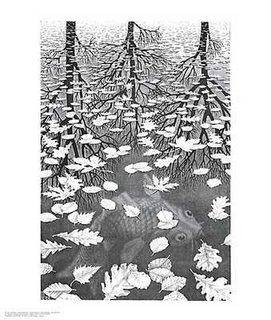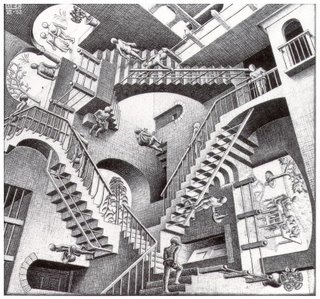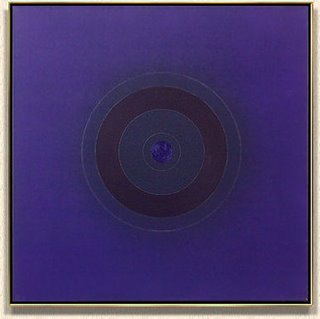ART: 21 PLACE
1. I think we both define and are defined by the places we reside to some extent. Our surroundings take part in molding us so we can cope in such. But we also effect our environment by the way we take to it. A city can be a beautiful place because of all of the markings and mystery through and between its structures. Although a city can be disgusting if we neglect it’s cleanliness, in turn affecting us by making us ill.
2. Sally Mann chose to live outside of any industrialized locations because she found them to be distracting and cruel to nature. In turn she was primitive in a sense. She aloud her children to roam as she once did, in the nude outside where she photoed them as such. She also found beauty in the landscapes she also photoed. Barry Mcgee resided in a city where he practiced graffiti and painted in buildings for money. Growing up in the city, Barry found art in lettering and abnormal characters.
3. I think art can be found through buildings, the writing on buildings and or nature it’s self. I’ve always thought this, the video just elaborated on my prior thoughts.
4. I would say I feel more effected by urban art, such as graffiti, because it involves art as well as adrenaline. I also feel as if more people will be able to see and enjoy the art that sits on building walls like billboards, only without advertisement.
5. I don’t really think I thoroughly understand this question. But I guess if you’re doing something such as graffiti you are probably working on a very large scale. If you are taking photos like Sally Mann you are working on a smaller scale, but with more composition with the sun light on landscapes and such. If you’re working like Richard Shard you are on an extremely large scale because you are illustrating the feeling of space through your work.
6. As a child I was, and probably still am semi-claustrophobic, small places made me feel uncomfortable, such as tight crowds. Therefore large crowds scared me. I liked to be in open areas, suck as on my roof at home or my back deck, I could call that comfortable. When I’m walking through crowds I like to have a hood on so I don’t have to look or talk to people, I call that my safe-haven. Driving in my car was also a place I liked to be to think, with an occasional cigarette and low music of course. I would call that my intellect place, I guess. When I was really young I would go to our local YMCA and play with all of my friends, that’s when I found out I didn’t take to sports very well. So I guess I could call that annoying, because I never really liked to hang out there, I just wanted something to do and be “cool.”
7. I pick my car. The lighting was of an evening light, maybe on a Friday before I was getting drunk and making bad decisions. I liked the feeling of the window down with air calmly blowing through the car. I also would have to mention the sound, because I was either listening to loud obnoxious music, quiet mellow music or nothing at all. It just depended on how I was feeling at that certain point and time.
ART: 21 STORIES
1. I think the most important stories of today aren’t that of known truth, but that of the future, via ideas, beliefs and the outcomes where we are and what we’re doing. Change, because I believe what we’re doing and were we’re going is not good. If I were to pass down a story I would pass down my idea that competition is not health and fucks with peoples heads to much which eventually leads to the harm and death of innocent bystanders. Look at what we’re doing, we’re power hungry and we’re killing people because of it. The story of how it’s too late for salvation. How we’re a massive virus on one of God’s cells and the Idea that life isn’t based on anything but a circle, no species is special or better then another. We’re all a part of a circle, a circle we are cutting in two. It’s drastic, but that’s my story.
2. Some stories hold entertainment… death, gore, drama, etc. Stories as such entertain us because we’re fucked up. Simple, but true. I would elaborate on why I think this way, but I would only be getting off subject and it should be apparent from the first question anyway.
3. They document stories that they find interesting or that hold some sort of compassion to their lives. Stories they feel need to be taught, or told to aware the naive.
4. Growing up I was probably pretty normal to everyone, but that’s only because I molded to people so I had no enemies. I was a jock, a hick, a rocker, a druggy, an artist, a partier, a graffiti artist, a writer, popular, cool, good-looking, trendy, smart… ish, middle class, low class, high class, black, white, green, red, blue, an intellectual, kind, caring, rude, polite, cruel, two-faced, you name it I was or could be it. It’s easy really, all you have to do is agree with people, and do what they do. That was me in a nutshell, although I am starting to mold myself now that I have people I can relate to near and around me in college, I’m even starting to enjoy the company of my parents. But I’m getting off subject. On my own I was very intellectual and probably bi-polar. I wanted love, but I didn’t want a relationship, I wanted sex, but I got too attached and I hated the after math of those situations, so I wasn’t a stud. I was shy to people I didn’t know, I thought about suicide a lot, but that’s only because I was so confused and I wanted to belong everywhere and no where at the same time. I always loved my parents, but I hated their religion, Catholicism. My mom tried to base how she raised us on Catholicism and all it did was make me hate religion. I was… and still am lazy, I use the excuse that being taught something ruins originality, when in actuality I’m starting to realize, it’s just me being lazy. I now hate working, because I’m lazy. Money pisses me off; I don’t think it should exist. I know you need it, but I would rather choose to be broke and mooch off my loving parents and summer income until I’m out of college. Growing up I always thought I was the mature one, when, now that I think about it, I was actually the immature one with an extremely lazy attitude making it hard for me to get anything done, because I would just convince myself my beliefs were against it. Again, now I’m starting to come around and I’m starting to realize life sucks, but I’m not the only one living it and I should stop pitying myself.





